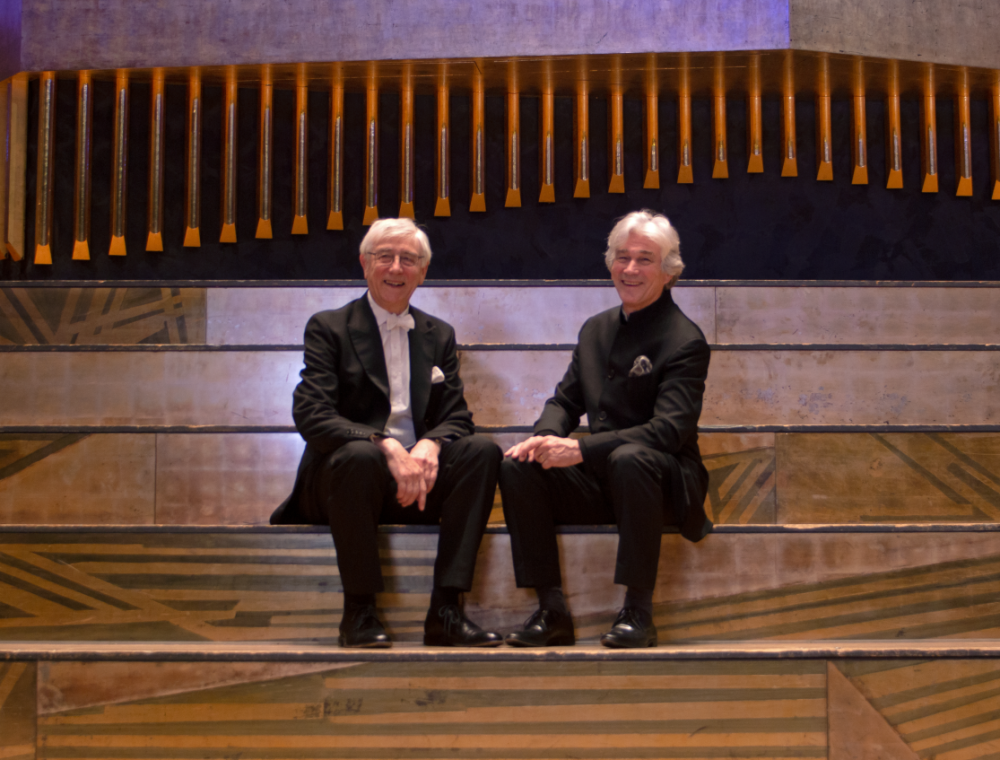
100 years and two months ago Aaron Copland’s Symphony for Organ and Orchestra was premiered by the New York Symphony Orchestra. At the end of the concert the conductor Walter Damrosch turned to the audience and said:
Ladies and Gentlemen, if a gifted young man can write a symphony like this at 25, within five years he will be ready to commit murder!
Copland loved it when any of his pieces caused a bit of a stir. As a young modernist rebel, he wore it as a badge of honour. Therefore, I am pretty sure that a century later he would have been amused and delighted that the same piece might still warrant a health warning!
I was in Nuremburg to see Copland’s first big orchestral work alongside Tchaikovsky’s Orchestral Suite No. 3 in G major, op. 55 and Charles Ives’ The Unanswered Question. It was being played at the Meistersingerhalle as part of the Darlington meets Darlington concerts. Jonathan Darlington is the conductor of the Nürnberger Symphoniker and his brother Stephen Darlington the exalted organist who has served as Director of Music at Christ Church, Oxford, from 1985 to 2018 and is currently fulfilling the same role at St John’s College, Cambridge. Despite both having great careers in music this was the first time professionally when they would appear on stage together.
The concert was very much a game of two halves. The first part was Tchaikovsky’s Suite. This was played to perfection. The first two movements are so soporific that they had me nodding off. The third part got my pulse racing but it was the finale of the fourth part that got me really excited. You’d have to be a dyed in the wool modernist naysayer not to absolutely bowled over by this piece. I think even Charles Ives would have loved it and it made me wonder if he heard it as a youngster and been inspired? It was a knock out and the whole orchestra were in their element. On Saturday evening I was at the front left (seventh row) and this gave me a great view across the front on the orchestra. I was entranced by the cellists Ariel Barnes and Florian Bischof who looked truly in love with this music. So much delight whilst playing and embracing at the end of the first half of the concert – they looked like brothers in arms. On Sunday I had a more central seat (11th row) and this afforded a better view of the majestic organ and soloist. However, the person catching my eye during the Tchaikovsky this time was double bassist Xenia Bömcke. Throughout this work she was beaming a smile and constantly making eye contact with her low string colleagues. It felt like she was in an intimate quartet rather than a large ensemble. In both cases it was uplifting to watch them getting so much joy out of their music making. The same can be said of Jonathan Darlington who radiates charm and enthusiasm and surely brings out the best in this orchestra – he seemed to have everyone in the building in the palm of his hand. It’s not the first time that my head has been turned by hearing Tchaikovsky played live. It was being recorded for German TV – I hope I can get access somehow?
That took us to the interval.
Jonathan Darlington had remained silent during the first half of the concert. The music well and truly did the talking. As he mounted the rostrum for the second half on both Saturday evening and Sunday afternoon, he reached for a microphone. Now I don’t speak German but I am pretty sure I got the gist. I think he was giving the audience a bit of advance warning – basically, saying “Now for something completely different”.
The one bit that I certainly understood was when he described Charles Ives’ music as
Stockhausen before Stockhausen
He spoke for 5 minutes. I am sure that he also must have said something along the lines that the Copland that the audience were about to be treated to would sound nothing like the Copland they are used to. I’m guessing of course. I would have loved to have had a translation (Jonathan – if you’re reading this perhaps you could respond with a summary of what you said?)
As the violins began playing the opening bars of The Unanswered Question pianissimo a funny thing started to happen. The audience that had been completely enwrapped and spellbound by the Tchaikovsky became a bit agitated. Perhaps it was me and because of the relative silence of the piece I was aware of more going on around me, but I was immediately coming up with similes. Instead of The Unanswered Question it felt to me like I was experiencing something more akin to The Interactive Whisper or The Unstifled Cough! It was the first time I have heard this Ives mainstay live so I can’t compare it to other performances, but it did feel like a great deal of people suddenly caught a cold! It wasn’t so much that they didn’t like the music, but perhaps a bit befuddled and intrigued especially to the offstage whereabouts of the questioning trumpet and the diffident woodwinds.
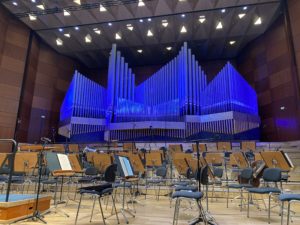
The Steinmeyer organ at the Meistersingerhalle in Nuremburg
And then to the Copland. When offered the chance to play with his brother, Stephen Darlington offered Copland’s Symphony for Organ and Orchestra as an option because his teacher Simon Preston recorded the piece. It’s not the rarest of Copland for sure but pretty close. I have seen it once (in Paris in 2017) and the last time it was played in the UK was 2006. It was going to be played on the magnificent Steinmeyer organ – probably the most august instrument I have ever seen!
The symphony is in three movements and scored for large orchestra. After the Ives, Jonathan Darlington departed briefly to allow for the reinforcements to join the band – the offstage woodwinds, trumpets and several horns, trombones, a tuba and percussionists and of course Stephen Darlington who sat at the organ at the front right of the stage. With such enormous forces, I bet that most people, irrespective of what Darlington had said were expecting a huge fanfare opening. But instead, the opening Prelude is a perfect follow on to the Ives being very quiet, eery, subdued piece. If anything, it probably accentuated that slight fidgetiness in the audience that I had already noted.
I’d love to know what was going on in Copland’s mind in the early 20s in Paris. For sure, he had been inspired by the silent film Nosferatu when writing his vampire ballet Grogh and this work carries on that gothic/ghoulish theme. Indeed, the Prelude with all its portentous foreboding is probably not a piece you would want to be listening to if you are out near a cemetery on a foggy night! The majestic but brooding organ music lends itself to that uneasy spookiness.
In the pre-concert talk Stephen Darlington (who spoke in English) said:
The score requires a wide variety of dynamics. So, you will hear that in the first movement, you’ll be relieved to hear, that the organ is actually quite quiet – most of the time! But then in the second and third movements you will certainly hear it because it has a lot of presence, intentionally so and I think the work suits us all very well. it’s a bit the mixture of composition styles that is so unique to Copland.
There are moments which are very fun in their own way with influences of jazz. He clearly experienced this in Paris and it’s almost as if he’s telling a joke somehow. I can’t get the effect on this organ, but one solo, he writes in the score should sound like a saxophone. So, almost as if you were in a nightclub. And then there are the driving rhythms which you expect to hear from Copland and incredibly exciting moments of colour for the orchestra. So, it’s a beautiful mixture of lyricism and elegancy and dynamic energy.
As with the Ives before, I felt that the audience were desperate to hear something resembling a melodic, romantic tune. Things were about to change – and they were going to get loud.
The second movement scherzo starts loud, ends loud and has a quiet (ish) bit in the middle. Rather than a night club this sounds more like a funfair to me with a scary ghost train and a rather sinister tunnel of love.
The third movement starts back in the shell (or perhaps back in the coffin) but it grows – it actually grows so much that it feels that all of a sudden a ten foot high Vampire has loomed up behind you and makes you jump out of your skin with one of Copland’s snappy two note motifs. Jagged and somewhat ugly but very arresting. At several points there are glimpses of the future populist Copland that hint at the ballet scores and movie soundtracks. But these lyrical moments are dismembered as quickly as they arrive. There’s no room here for beauty. In all, the third movement comes across as a concerto for orchestra – there are great bits for the strings, solo violin, trombones and the timpanist Simone di Tullio had a field day. The tension builds and the orchestra goes full steam ahead into what seems like a full on battle between good and evil. I can’t get enough of these Copland crescendos – but as concert goer where do you look when everyone is absolutely going for it – the bellowing organ, razor sharp staccato strings, flutter tonging flutes, that pounding tolling timpani and a veritable hurricane from the brass section? There’s a moment right at the end where organised carnage abates and the majestic organ soars skywards before being engulfed once again amidst the orchestral violence.
At the end of the first concert there were a couple in front of me and the woman looked at her partner and then laughed heartily and covered her mouth with her hand. I like to think she was thinking the same thing that I was thinking. “Oh my God, that was immense”. Of course, she might also have been thinking “What the hell was that?” or perhaps a combination of the two?
The Darlington’s got a rousing round of applause and several curtain calls which made for quite difficult navigation considering the number of players on stage and obstacles caused by the organ paraphernalia.
As a little encore the brothers played a lovely duet together on the organ of Rachmaninov’s Vocalise. It was a balm to the soul for any of the punters that might have been shaken to the core by the previous 25 minutes of horror and heavy metal!
I was incredibly impressed by this orchestra and the two brothers. There were plenty more hugs and a real spirit of camaraderie. I got the distinct impression that everyone involved realised what a great couple of concerts that they had put on.
That said, I think it highly likely that from an audience viewpoint the first half of the concert was a lot more in keeping with their comfort zone. Hence, the jury is probably still out as to whether the Nürnberger Symphoniker faithful are quite ready for the modernist leanings of Copland or Ives – perhaps give it another 100 years?
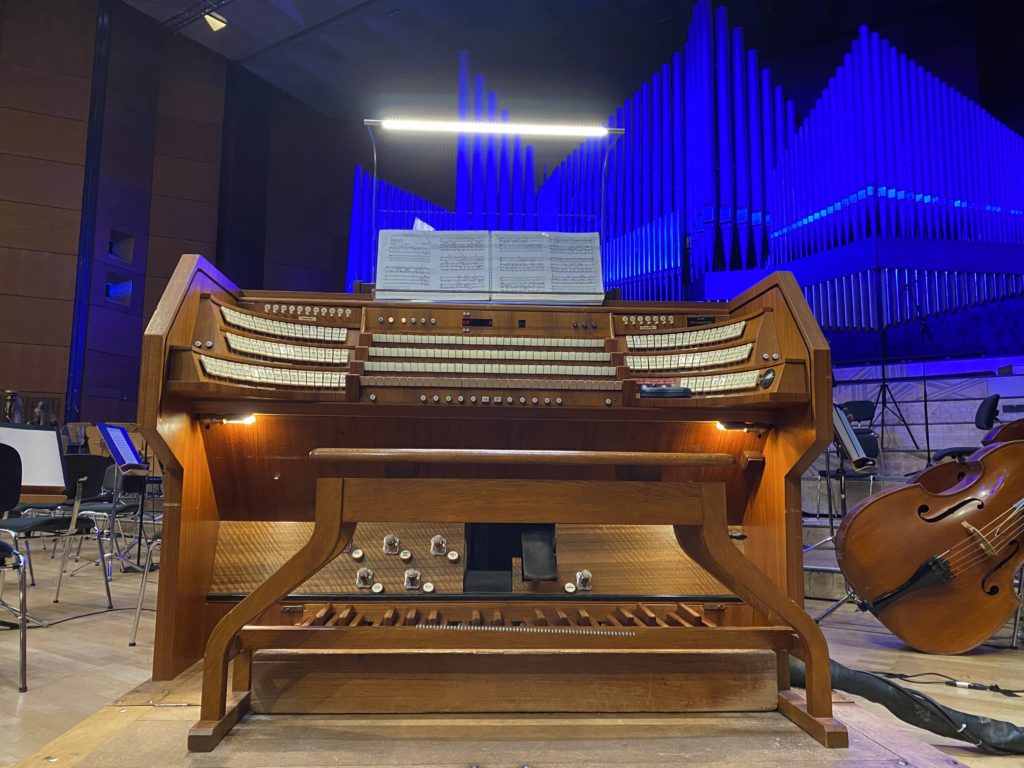

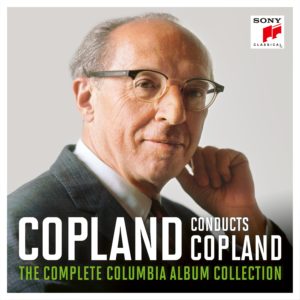
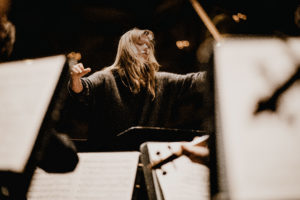
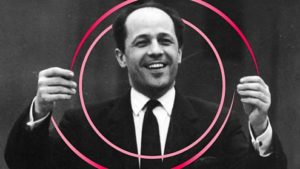
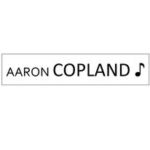




Leave a Comment